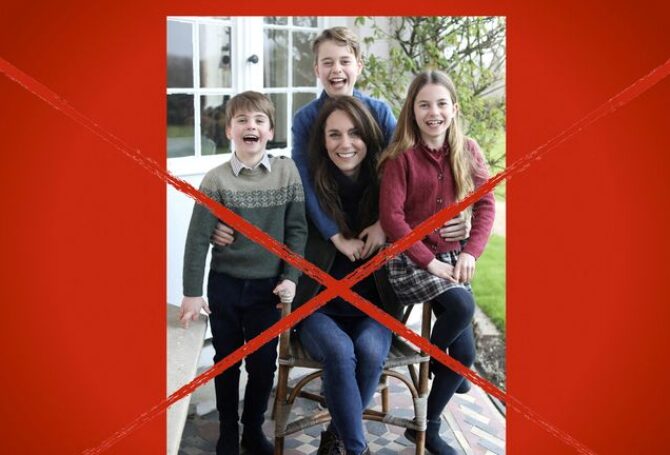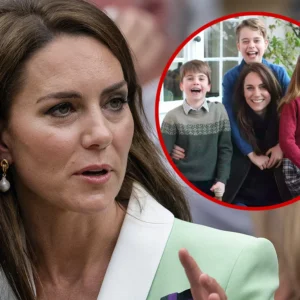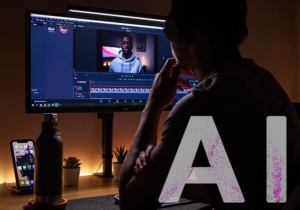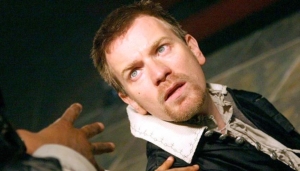
Manipulated Photos and Videos Can Deceive – and Boomerang into a Crisis
The photo fiasco resulting from image-editing by the Princess of Wales is a cautionary tale at multiple levels. Well-intentioned photo fakes can have negative consequences, and less-than-revealing explanations can have even worse consequences.
The doctored family picture Princess Kate shared for Mother’s Day turned into nightmare. After fetching “Looking Great, Kate” headline, the image was “killed” by the Associated Press after keen-eyed observers noticed several visual inconsistencies.
 Afterward, Princess Kate attributed the flaws to her inexperienced photo-editing skills, but avoided answering the questions sparked by the fake photo. Was that her real post-surgery facial appearance or an image repurposed from an earlier Vogue cover? Why didn’t the picture include Prince William? Why wasn’t she wearing her wedding ring? Was this really faulty photo-editing or an artificial intelligence deepfake?
Afterward, Princess Kate attributed the flaws to her inexperienced photo-editing skills, but avoided answering the questions sparked by the fake photo. Was that her real post-surgery facial appearance or an image repurposed from an earlier Vogue cover? Why didn’t the picture include Prince William? Why wasn’t she wearing her wedding ring? Was this really faulty photo-editing or an artificial intelligence deepfake?
Such questions shouldn’t have come as a surprise because of the veil of secrecy surrounding Princess Kate’s surgery and recovery. She hasn’t been seen in public since Christmas
For the future king and queen of Great Britain, there is a better balance between privacy and fake photos. The same is true for anyone in the public eye.
It’s useful to distinguish between the tool of fakery from actual fakery.
Photo-Editing
It’s useful to distinguish between the tool of fakery from actual fakery.
 There are loads of reasons for photo-editing, as shown in ads for smartphones. Deleting an extraneous person or object in the background, tuning up the lighting of the main subject and adding layers and special effects can convert a so-so image into a memorable image. If the photo is for personal use, the fixes just enhance a moment.
There are loads of reasons for photo-editing, as shown in ads for smartphones. Deleting an extraneous person or object in the background, tuning up the lighting of the main subject and adding layers and special effects can convert a so-so image into a memorable image. If the photo is for personal use, the fixes just enhance a moment.
When photos are intended for external use, including publication in news and on social media, photo-editing assumes a professional responsibility. News organizations such as AP require photos that are “accurate and not digitally manipulated”. Allowable minor adjustments include cropping, color corrections and removing dust from camera sensors.
These are significant boundaries because news streams now routinely include content captured by observers on cell phones or cameras. Such coverage provides an eyewitness dimension to news events, such as the footage filmed by passengers on the Alaska plane that had a door plug blow out in flight.
Editors refer to this as raw footage because it is spontaneous, unplanned and usually not professionally shot. It’s valuable because it’s genuine, not doctored reality.
Faking in Absentia
Movie directors rely on computer-generated imagery for spectacular special effects. News directors can’t fake it. Ever-improving photo-editing tools, aided by artificially intelligence, make fakes increasingly difficult to detect, but no less copacetic.
 Deepfakes have begun infiltrating political campaigns, prompting legislative actions to require candidates and causes to favored their AI-manipulation. Deepfakes have become a favorite tool for disinformation to harass, intimidate and demean people or organizations. There also are growing numbers of legitimate “fakes” such as virtual courtrooms to prep trial witnesses and virtual showrooms to feature furniture in real-life settings.
Deepfakes have begun infiltrating political campaigns, prompting legislative actions to require candidates and causes to favored their AI-manipulation. Deepfakes have become a favorite tool for disinformation to harass, intimidate and demean people or organizations. There also are growing numbers of legitimate “fakes” such as virtual courtrooms to prep trial witnesses and virtual showrooms to feature furniture in real-life settings.
The difference is future witnesses and furniture shoppers know what they are seeing is fake. Viewers watching AI-aided disinformation on YouTube aren’t always sure what’s real and what’s fake.
While the tools to create deepfake videos become increasingly sophisticated, their usability is getting easier. A Wharton business school professor produced a realistic deepfake video of himself in just eight minutes. There is a YouTube video showing how to create a DIY deepfake without expensive equipment in 10 minutes. Fortunately, the ability to detect deepfakes is improving, too.
Faking and Reputation
As Princess Kate discovered, a fake portrait can backfire. Meant to be reassuring, her manipulated photo was unsettling when discovered. Instead of showing the British public she was recovering, the fake photo made people wonder if she is alright while igniting an explosion of conspiracy theories.
Her lame explanation of the fake photo compounded the situation. As a result, her reputation, and the reputation of the Royal family, took a hit.
The hits will just keep coming by stonewalling. Pleas for privacy will fall flat. The fake photo was supposed to show all is all well. Meeting that objective will require something more tangible – and real – to counter self-inflicted reputational damage.
 Faking and Deception
Faking and Deception
Sophisticated photo-editing is relatively new, but intentional deception is not new. Shakespeare’s legendary villain Iago admits in a soliloquy that “I am not what I am” as he plots evil against Othello. Deception doesn’t require drama to be real. That’s why crisis communication counselors advise clients to face facts and tell the truth and avoid the drama of dissembling, which can be more harmful in the long run than deception.
Difficult situations demand undiluted truth, not the deception of a happy face.
For most of us, personal matters are nobody’s business. For those who are in political office, run businesses or celebrities, their status makes their personal life of interest to the public. They don’t get to choose what’s public and what’s private.
Faking and Crisis Response
It doesn’t take a doctored photo to create a reputational injury.
 Crisis communicators like me implore clients to acknowledge responsibility in any crisis as rapidly as possible and provide responsibly transparent information to employees, affected parties and the news media. We urge actions and words that reassure and tamp down speculation and rumor.
Crisis communicators like me implore clients to acknowledge responsibility in any crisis as rapidly as possible and provide responsibly transparent information to employees, affected parties and the news media. We urge actions and words that reassure and tamp down speculation and rumor.
It’s wise to avoid self-created crises, such as using fake photos to tell your story. Honesty most often earns respect and, in many cases, empathy. If Princess Kate wasn’t ready to show her own face, she could have shared an affectionate picture of her three children for Mother’s Day. People might still have wondered how she is doing, but they wouldn’t have wondered why she chose a false face.
In the past, British monarchs, like many wealthy and important people, could persuade major news outlets to squelch unflattering stories. Social media and bloggers have made that kind of PR approach unrealistic. If you don’t tell your own story, someone else will and it usually will be less charitable and potentially even less tethered to the truth.
British royalty is learning what corporate executives, brands and politicians have learned – responding to a crisis is mandatory, not optional. Failing to respond with substance in a timely manner is now viewed as evasion and hiding the truth, whether or not you have a crown.




